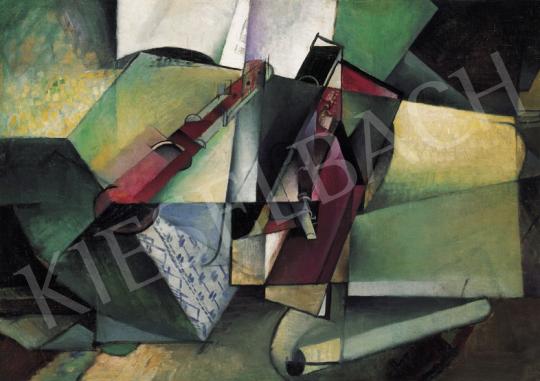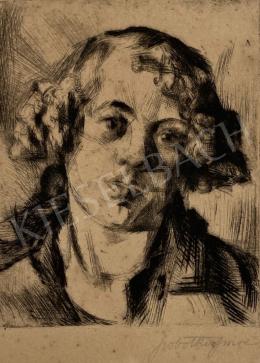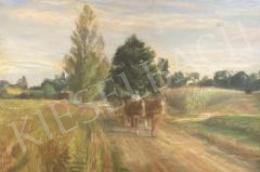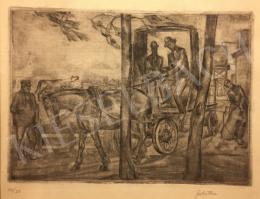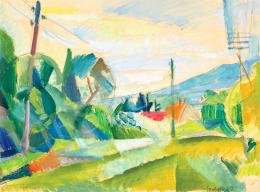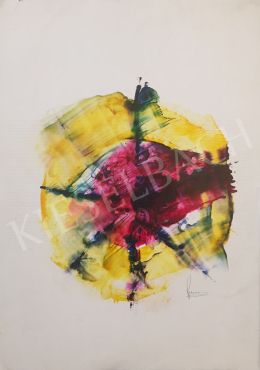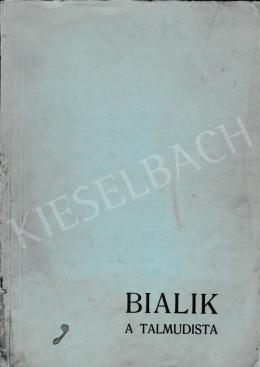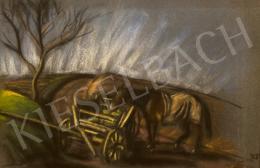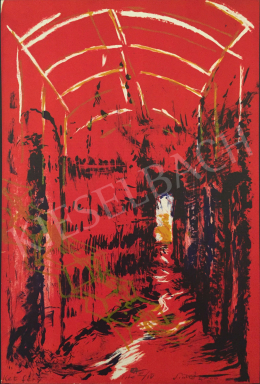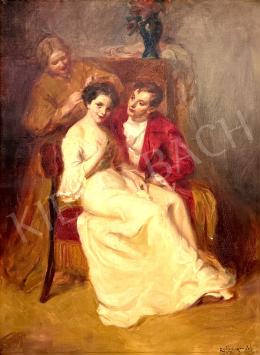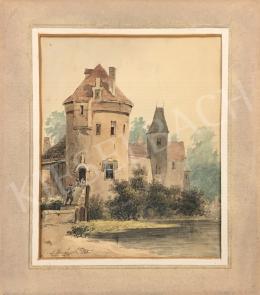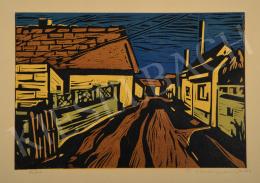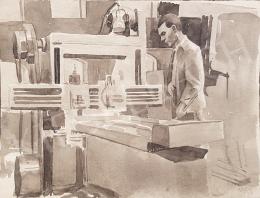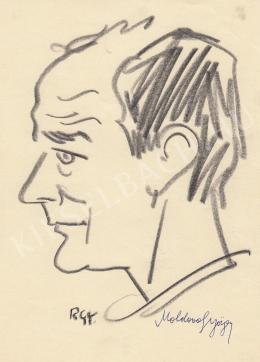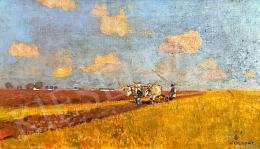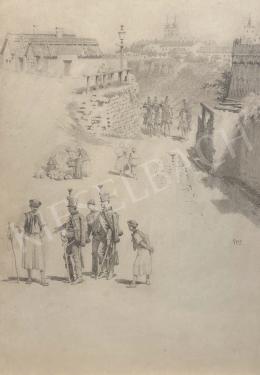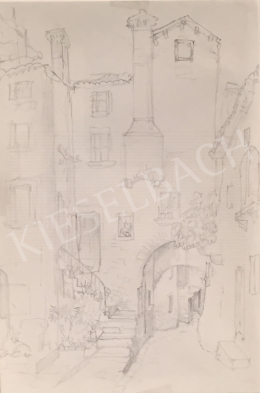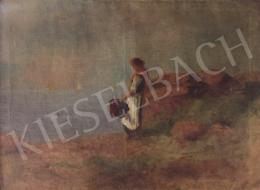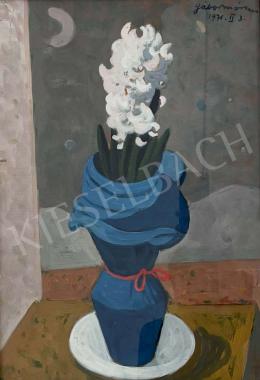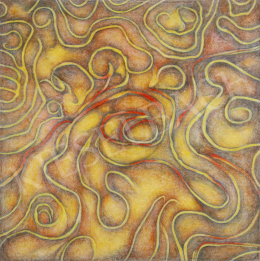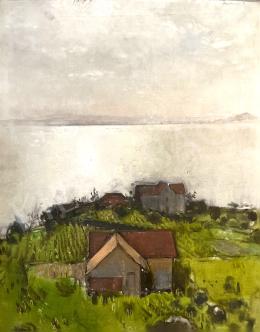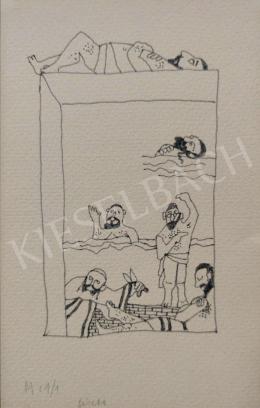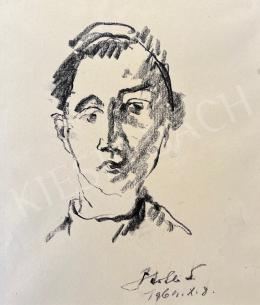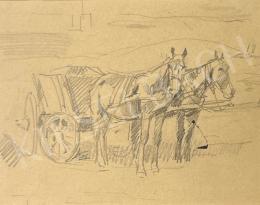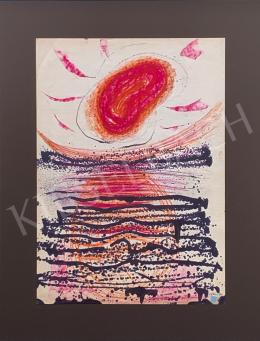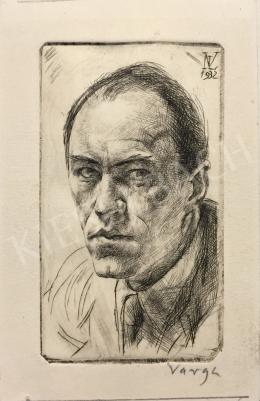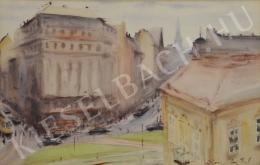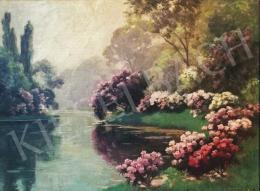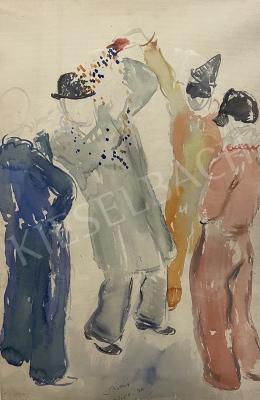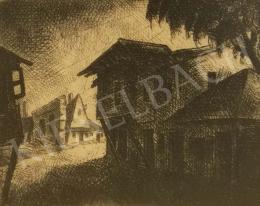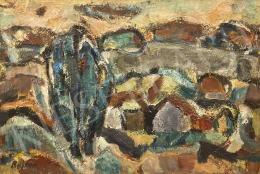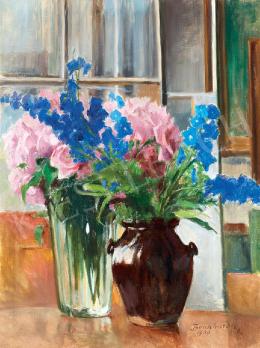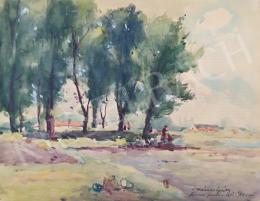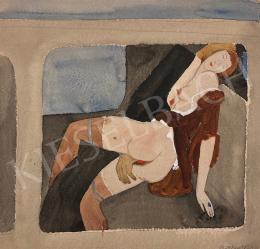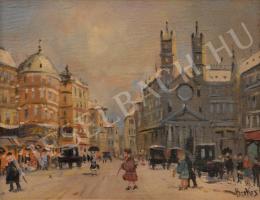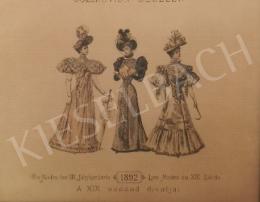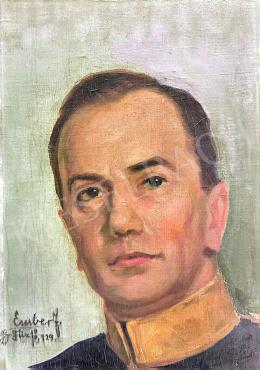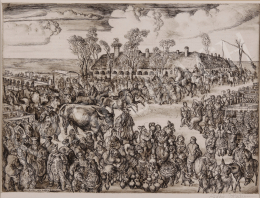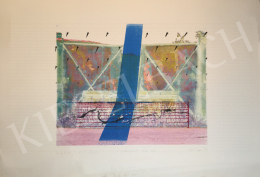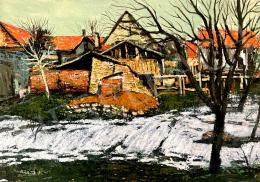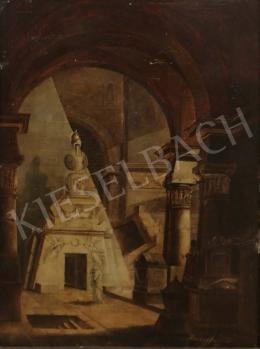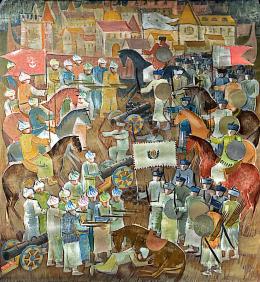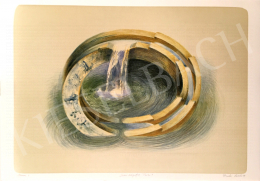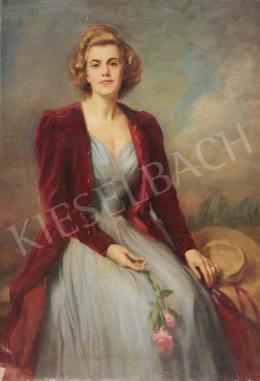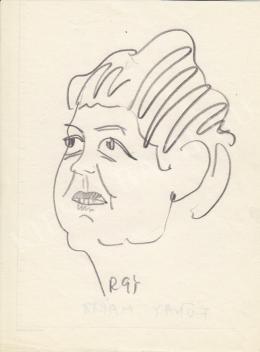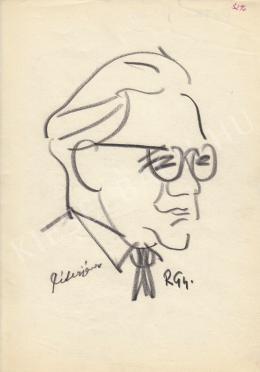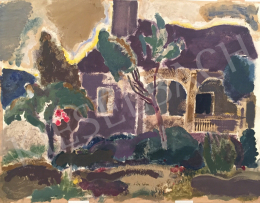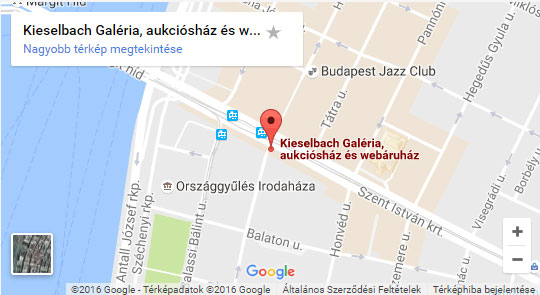Trying to find the reasons why Cubism was not really a fertile trend in Hungary, Ernő Kállai explained the fact with the basic features of a national character that was intensively connected to the experience of sight and could not really tolerate the strict, abstract principles of Cubism. Though the style could never really take root in Hungary, some of its formal innovations, mixed with the stylistic marks of Expressionism, can be observed in the oeuvre of several Hungarian painters. These young artists - József Csáky, Alfréd Réth, Sándor Galimberti ,Valéria Dénes and Imre Szobotka among them- went to Paris in the first years of the 20th century, where they were influenced by Picasso and the others' radical innovations. These artists created the most valuable pieces of their oeuvres in this inspiriting atmosphere.
The circumstances of the creation of the Cubistic Still-Life is not easy to reconstruct. Szobotka arrived in Paris at the end of the 1910s. The following year he visited the works of the Cubist artists at the exhibition of the Salon de Indapendants. That was the first time that these painters had had the possibility to represent the new way of painting as an independent school. Archipenko, Duchamp, Leger, Metzinger and the others' works stirred up a storm of indignation in the French art life. Szobotka recognized the importance of the new school immediately, and wrote about it in his letters sent home. A year later, when he returned from Hungary to Paris again, he became the student of the free school La Palette led by Metzinger and Le Fauconnier. In 1913 and '14 he exhibited together with Chagall, Metzinger and Gleizes; Apollinaire wrote appreciatively of his pictures in the columns of the legendary Montjoie.
This promising start of career was blocked by the World War I. Szobotka, together with many other foreigners, was interned to a camp in Bretagne and had to stay there for another four years. Though he was allowed to paint there, in those circumstances it was impossible to work intensely. The picture presented here must have been painted before these years, some time in his studying period which lasted to the spring of 1912.
The Cubism has brought maybe the most prominent changes in the history of art. Picasso and the others broke an almost 600 years old tradition by reforming the principles of pictorial representation. The sight received by the eye was not seen as the own features of the objects any longer, but as a bunch of senses that the human mind transforms and constructs unconsciously into a picture, out of the impulses coming from the world. The new aim was to get to the essence of things, to their real forms. So, in their experiments the artists also examined and tried to transform the ways of human perception. They were inspired by the new results achieved in physics; by that time, in that field it already had been proved that it was not the sight perceived by the eye but an objective system of signs, - mathematics -, that was able to lead one to the essence of nature.
Both from the point of view of forms and iconography, Szobotka's picture is an integral part of the most important works of Cubism between 1913 and '14. In the painting the composition provided by the natural sight is modified by the autonomous structure of the picture; the arrangement of the elements of sight is not determined by the principles of perspective but rather by the logic of the autonomous construct of the picture. It is not the mapping of one particular visual impression that can be observed here; elements of sights revealed from more point of views are united here with other visual elements, like free associations, unconscious information. This combination opens up a deep system of connections. The surface of the picture is filled by heaps of separated plains and by some fields of colors that evoke the cylinder-shaped form of the represented object: a table with a patterned tablecloth, sheets of music and a clarinet partly taken out of its box appear in the painting. The lines bordering the plains are united into one straight line at some parts. They point out the forms appearing between them as they were spotlights. In Szobotka's picture, in contrast with the theory of reducing colors in the early phase of Cubism, the colorit has a major role. The vivid red of the inside of the box is repeated on the body of the diagonically set clarinet. The picture is akin to the so-called 'orphic' trend of Cubism in many respects, like, for example, the intense exploitage of colors which was hallmarked by, among others, Robert Delaunay'name.
The Cubistic Still-life is also typical in respect of its theme. The typical motifs of a cubist still-life - like instruments (guitar, violin, clarinet), newspapers, glasses, cups, card, bottles - are all the props of a bohemian life of the city and evoke the world of circus and night clubs. The instruments, which are inevitably the most often appearing objects in the iconography of still-lifes, are the tools of the musical clowns and entertainers and in this respect they are the symbols of the duality and isolation of an artist's life. On the other hand, they symbolizes music itself, an art which is abstract, isolated from the world of experiences, so it could serve as an example for Cubist painters.
The appearance of Szobotka's present work is one of the greatest sensations of the auctions of these days. It is an important work of the European Cubism of that era. Its emerge is outstanding also from the point of view of art history: it is not only a prominent piece of the artist's oeuvre but serves as a new data to an enigmatic chapter of modern Hungarian art history.
Péter Molnos






